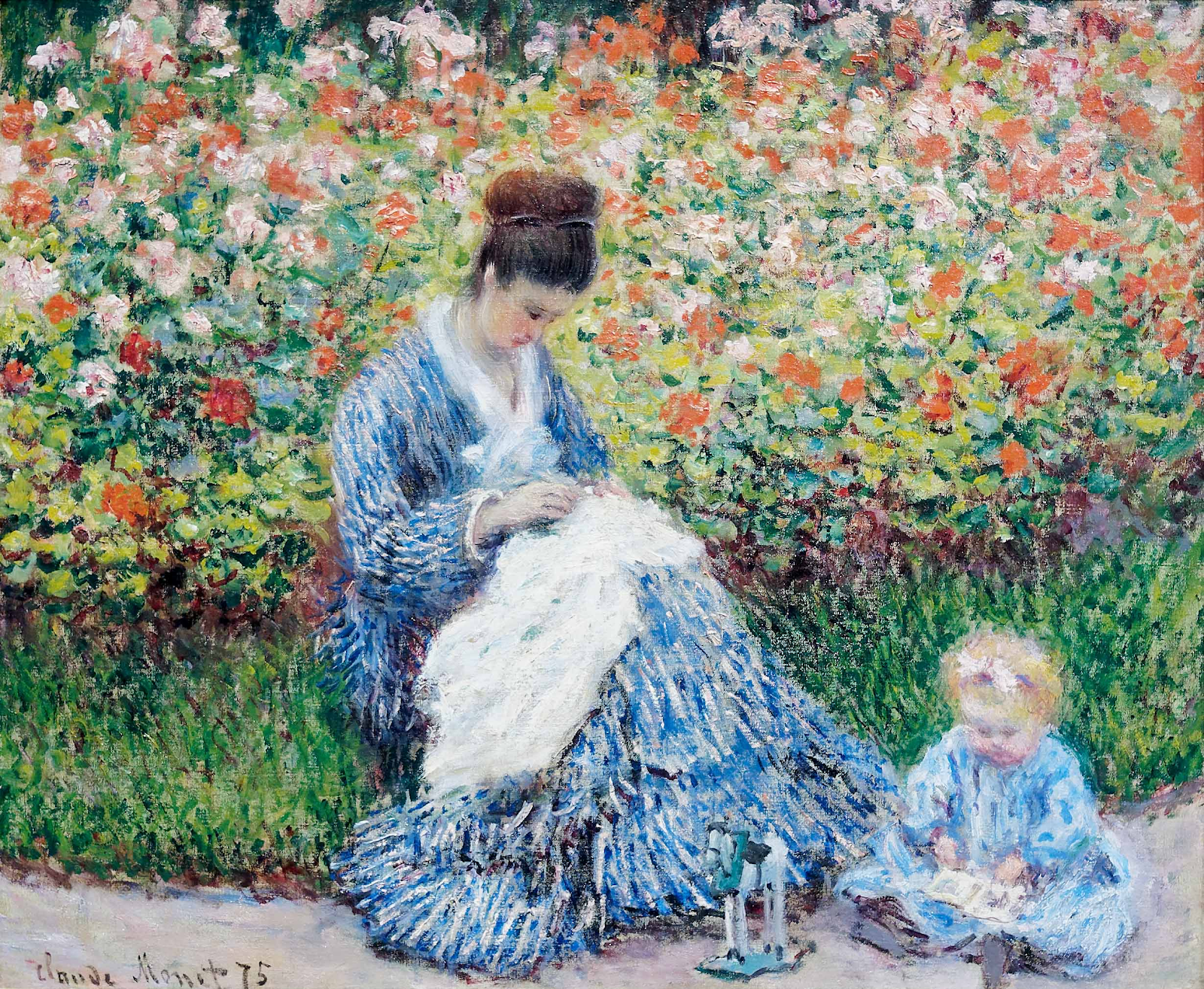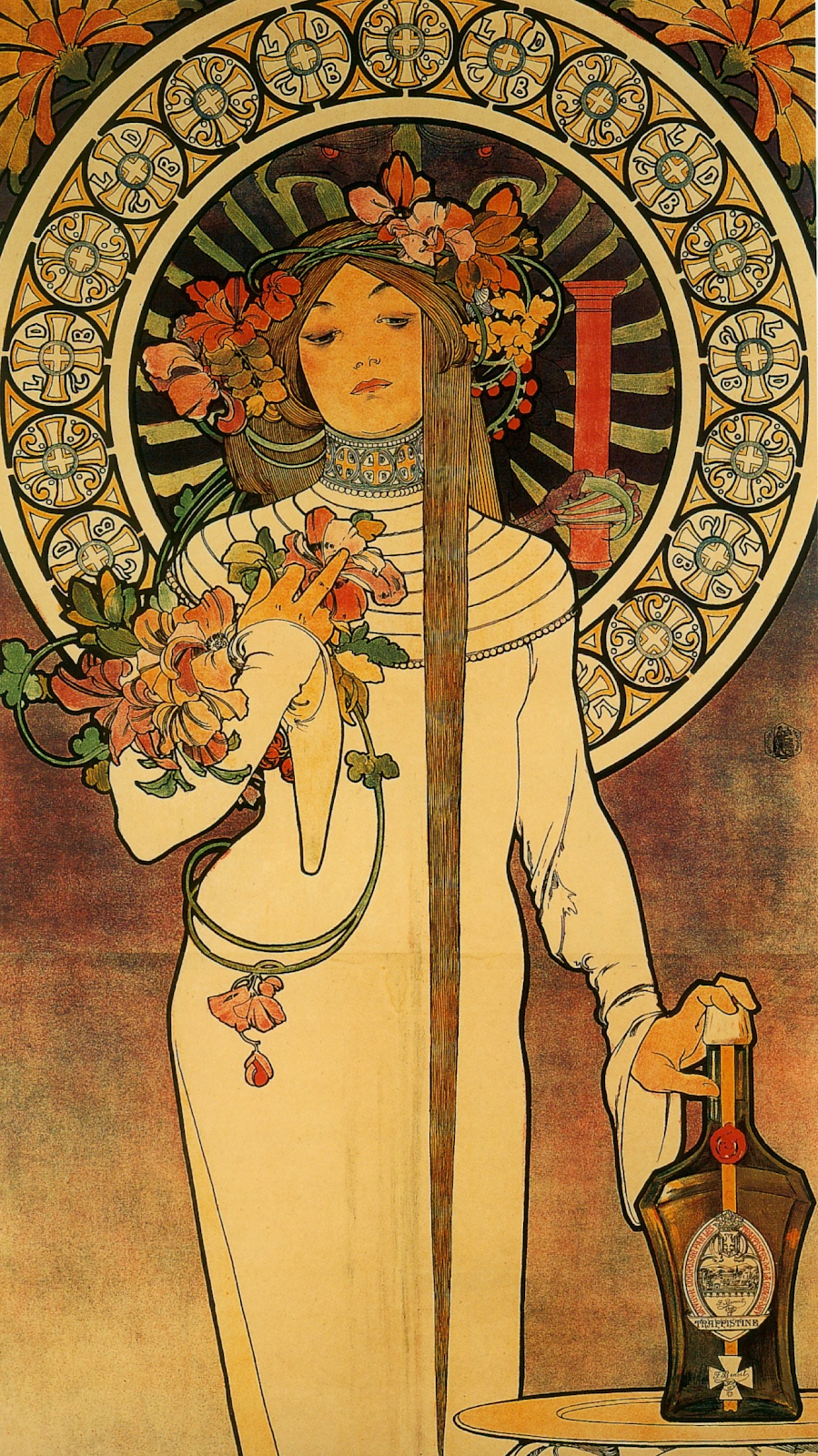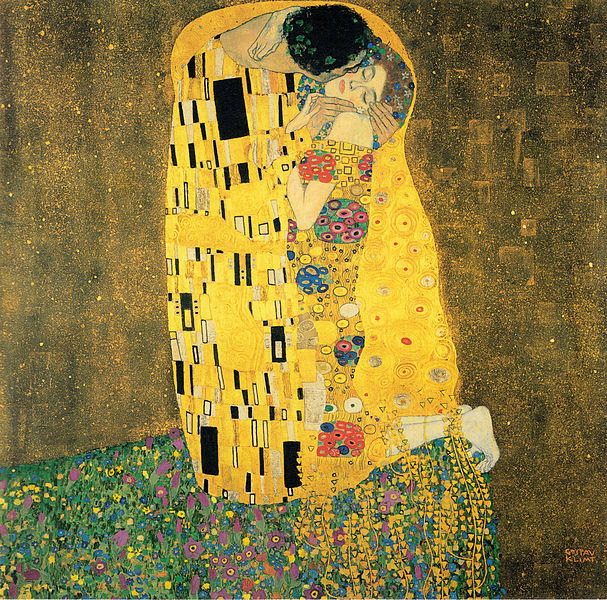Impressionism and Art Nouveau
Impressionism & Art Nouveau
Impressionism
In 1874, a group of painters including Claude Monet and Edgar Degas, among others, gathered together and broke from the traditional hierarchy of art in France. Their style of painting was different, loose lines, with visible brushstrokes and bright colors. The subject matter was everyday life and tender moments of the middle and upper class. Instead of working strictly indoors, these painters often took their canvases outside and painted their scenes in gardens, pastures, and fields. They came to be known as the Impressionists.
This piece by Claude Monet, Camille Monet and a Child in the Artist’s Garden at Argenteuil, was painted in 1875. The woman in this painting was Claude's wife. We can see that the brushstrokes on Camille's dress are visible, as are the brushstrokes on the child's dress. They appear to be spending a pleasant afternoon in the garden. The light appears to bounce off of the blanket Camille is crocheting. The lines are loose and the background is speckled with colorful blooms. Monet was known for his brushstrokes and his use of light, both of which we see in this piece.
Camille Monet and a Child in the Artist’s Garden at Argenteuil
1875
Degas set himself apart from the other Impressionist painters by moving the canvas back indoors. Many of his works focused on ballet and scenes from the studio. He painted from unconventional angles and interesting viewpoints. Like Monet, Degas was fond of playing with light. As we see in Ballet Scene, painted in 1879, The floor is darker behind the dancers and seems to especially reflect off of the one to the left. The brushstrokes in the background are very loose and are visible on the dancer's tutu skirts. The scene is playful, yet calm.
Ballet Scene
1879
Art Nouveau
The Art Nouveau style of art was born out of a desire to unite several disciplines of art, finding inspiration in organic and natural forms, and Japanese art. Art Nouveau, literally meaning "New Art" focused on the marriage of aesthetics and function in all areas of life, including architecture, design, glasswork, and jewelry. Art Nouveau style is ornamental with asymmetrical lines.
Alphonse Mucha
La Trappistine
circa 1897
La Trappistine by Alphonse Mucha around 1897 is actually a liquor advertisement. Mucha was known for his poster advertisements and the circular patterns as we see behind the woman's upper body. Mucha's style is very characteristic of the Art Nouveau style, with sinuous lines and organic shapes. Even the liquor bottle's lines are organic. It oozes grace and sensuality.
Gustav Klimt
The Kiss
1907
Klimt is perhaps the first Art Nouveau artist that comes to mind when thinking of this genre. As the first president of the Austrian Succession Group, he brought fellow artists, architects, and designers together for collaboration. Eroticism and sensuality were a focus in Klimt's work, bringing in the elements of beauty and utility. In The Kiss, the couple is enveloped in a passionate embrace, surrounded by a bright gold robe. They are the main focus of the painting, seemingly perched upon a grassy hill surrounded by wildflowers. The abstract design on the cloak is characteristic of much of Klimt's work.
Thoughts
If I had to choose between these two genres, Art Nouveau would be my favorite. Impressionist paintings are pleasant to look at, but lack depth. They don't provoke much thought and don't seem to be very interesting. I appreciate the loose style of painting and the unfinished brush strokes characteristic of the Impressionist style, but the subject matter doesn't excite me. Art Nouveau is much more exciting to look at. Klimt was clearly successful in his infusion of sensuality - we can almost feel the passion of the lovers in The Kiss.
References
Wolfe, S. Art Movement: Art Nouveau. Artland Magazine.
Mucha Foundation. March 2015. Mucha at a Glance. Mucha Foundation.
Samu, Margaret. 2004. Impressionism: Art and Modernity. In Heilbrunn Timeline of Art History. New York: The Metropolitan Museum of Art, 2000–.
Schjeldahl, P. 2016. Edgar Degas: A Strange New Beauty. The New Yorker.
Cramer, C., Grant, K. 2019. Impressionism as Optical Realism: Monet. Smarthistory.
Martinez, J. 2019. Many Faces: Art Nouveau's Themes and Influences. The Collector.






Comments
Post a Comment